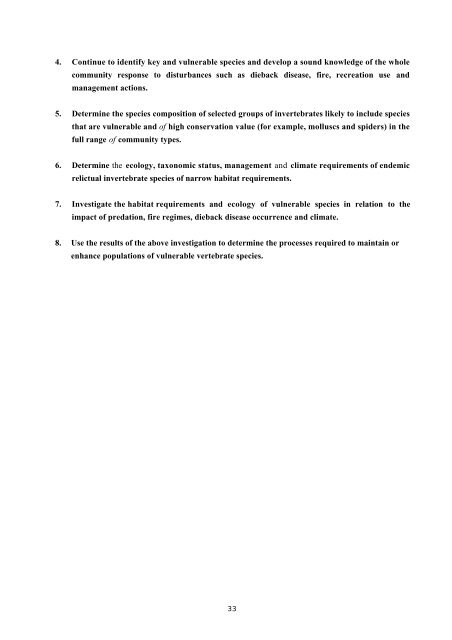Walpole-Nornalup National Park - Department of Environment and ...
Walpole-Nornalup National Park - Department of Environment and ...
Walpole-Nornalup National Park - Department of Environment and ...
You also want an ePaper? Increase the reach of your titles
YUMPU automatically turns print PDFs into web optimized ePapers that Google loves.
4. Continue to identify key <strong>and</strong> vulnerable species <strong>and</strong> develop a sound knowledge <strong>of</strong> the whole<br />
community response to disturbances such as dieback disease, fire, recreation use <strong>and</strong><br />
management actions.<br />
5. Determine the species composition <strong>of</strong> selected groups <strong>of</strong> invertebrates likely to include species<br />
that are vulnerable <strong>and</strong> <strong>of</strong> high conservation value (for example, molluscs <strong>and</strong> spiders) in the<br />
full range <strong>of</strong> community types.<br />
6. Determine the ecology, taxonomic status, management <strong>and</strong> climate requirements <strong>of</strong> endemic<br />
relictual invertebrate species <strong>of</strong> narrow habitat requirements.<br />
7. Investigate the habitat requirements <strong>and</strong> ecology <strong>of</strong> vulnerable species in relation to the<br />
impact <strong>of</strong> predation, fire regimes, dieback disease occurrence <strong>and</strong> climate.<br />
8. Use the results <strong>of</strong> the above investigation to determine the processes required to maintain or<br />
enhance populations <strong>of</strong> vulnerable vertebrate species.<br />
33

















